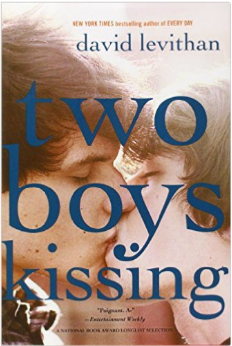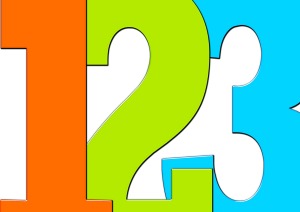
CCO public domain image from pixabay.com
So, I’ve been thinking about my new-to-me senior elective for the fall (Good Reads). I know it is barely summer, and I haven’t even finished thinking and reflecting on my classes from the year, but although I picked the books, I have never taught any of them and I had a hard time picking a group that had some connection. I am a little anxious that the connections won’t hold up or work.
I sat down the other day to plan out my assessment overview. I had already loosely planned out the timing of the books because I had to be sure that I could fit them into a single semester. So, I have some assessment ideas, but as I thought about it later, I realized that they were assessment activities, things to put on a calendar, more than anything else. My plan evenly distributed big and small assignments, balanced them in the proportions I need, and included a range of assignment formats and types. All good. What my assessment plan did not do was reference the essential questions and ideas of the course. Partly that’s because I have not planned the actual prompts for some of the assessments yet. However, in comparing that to the assessments I had planned for my courses last year (Truth and Fiction and YA Literature), I was not impressed with myself. Last year, I had big, ambitious goals for final synthetic pieces that would tie all sorts of things together. Mostly these ideas were a little too big, no surprise there, but having them in mind meant that I also had in mind something to build to with other work, and this is what I realized I was missing.
Then, for some reason I woke up in the morning thinking about charts and infographics. Now, I love a good infographic; I used to have my 5th graders make webs of things all the time. Yes, it is possible to express those same ideas and connections in writing, but probably not if you are 10 years old, and honestly maybe not even if you are 17 or 18 years old. One of the things that a well done web, chart, infographic allows the creator to do is show lots of related information visually without having to pick an order in which to tell the viewer about this in words. It can show connections that the chart maker might not quite be able to verbalize in a way that relates to everything else, and connections that might be tangential such that they would not warrant a mention if they had to relate to a paper, but are there. (Even in this short post, there are numerous side branches that I have pruned in writing that I would have left in a chart or infographic.) Plus, the visual thinkers are often great at them. I still think about a 5th grader in my first class who was a great field athlete (lacrosse in particular) who made several amazing webs of Greek myths that demonstrated how deeply he saw the connections between and among the characters and events of the story. I have since referred to is as “seeing the field” in his honor and because I think that is what he was able to do. There were other “stronger” readers who made very straight forward flow charts of the events in the story, but his chart showed much more about the complicated web that is Greek myth. (That little 10 year old is now a young man and probably just finished his junior year in college.) Sorry for that digression.
Back to the topic here. SO, I have always been a fan of making thinking visible, both the idea (before it was also a book) and the book. So, I’m thinking about charts and the title of the class, and a blog post by @dogtrax about connections. I often have a lot of somewhat unrelated ideas swirling around in my head that ultimately come together into something that makes sense to me anyway. Once it’s come together, the initial, disparate ideas are more just blips along the thinking path, but I like to remember and trace my connecting process. Plus, I usually feel very satisfied once I’ve wrangled those ideas into something sensical, and it is just interesting to me to ponder individual creative process. I honestly believe one can practice and create the conditions for inspiration. In this case, I thought in particular about the charts in magazines that take events in a city and rate them according to some amusing and unusual factor.
This lead me to think about the characteristics of a good read. I have put a couple of potential characteristics that one might consider in my summer reading questions. But I wanted more than a single quality. How many qualities could I get on one chart? What if I moved to 3 dimensions? How might I incorporate this sort of thinking throughout the course so that students become familiar with the process without it taking over? Last fall, I wanted students to think about the interconnected ways that the individual pieces of narrative in SlaughterhouseFive connected. And after seeing an exhibit of student art work at PAFA, I shared a student work with them. Then we went about creating something inspired by it that connected ideas in particular passages. I wrote about it at the time. I was too much at once, but had I structured it differently, it could have been more successful. An idea worth keeping in mind.
And just like that, an idea came together. It’s not even clear in my head yet, but I know it just needs some massaging, that the pieces are there. I don’t know why I know this, and there is no guarantee that it will work, but I know that I don’t need new pieces; I can stop collecting. Here are the basics:
- Begin by looking at some of the potential qualities of a good read that I proposed in relation to our summer reading book (Kontiki by Thor Heyerdahl).
- Break those qualities down into some smaller parts
- Make some sort of graph or chart of how students see the book across those qualities
- Add qualities as the semester progresses
- Chart those for each book, reflecting back on earlier reads as well (good for keeping them in mind).
- Some sort of synthesized final chart–maybe students choose 3-4 of the qualities that they think are the most important for their idea of a good read and figure out a way to make 1 chart that combines this.
I guess this post is really about two things. One, my reflection of the incompleteness of my assessment planning and the need for more attention to the essential questions of the course. And two, the way ideas spring into my head, but are really the result of collecting, curating (this is such a trendy word, I hate to use it, but anyway…), and ultimately mashing things together in a way that the pieces click into place as if they were meant to be together. I know that for meI have to do something with the things I notice (to use @Dogtrax’s term) in order for them to become part of the collection of random flotsam and jetsam that floats around in my head. Once those noticings have make it into the more permanent collection, I have them at my disposal–I can call them up to admire them again, I can try them out in some new combinations, and ultimately I can remix them with other ideas so that they become mine.
Is that how other people work?
 Part of what makes me worry about this is an experience I had last year in my YA literature class with seniors. We read Two Boys Kissing by David Levithan. This is an award-winning YA novel that centers around characters and their relationships most of which fall into the gender and sexual diversity category. There is nothing graphic about the situations or relationships that are described. There is kissing. There is a wandering hand or two. There is a lot of hand holding. There are bodies close together. Everyone keeps their clothes on, all the time. And yet, more than one student used the word graphic to describe the book. However, these same students think the rape of a female character in another book was graphic. That was a ‘relationship’ they were familiar with in literature.
Part of what makes me worry about this is an experience I had last year in my YA literature class with seniors. We read Two Boys Kissing by David Levithan. This is an award-winning YA novel that centers around characters and their relationships most of which fall into the gender and sexual diversity category. There is nothing graphic about the situations or relationships that are described. There is kissing. There is a wandering hand or two. There is a lot of hand holding. There are bodies close together. Everyone keeps their clothes on, all the time. And yet, more than one student used the word graphic to describe the book. However, these same students think the rape of a female character in another book was graphic. That was a ‘relationship’ they were familiar with in literature.











